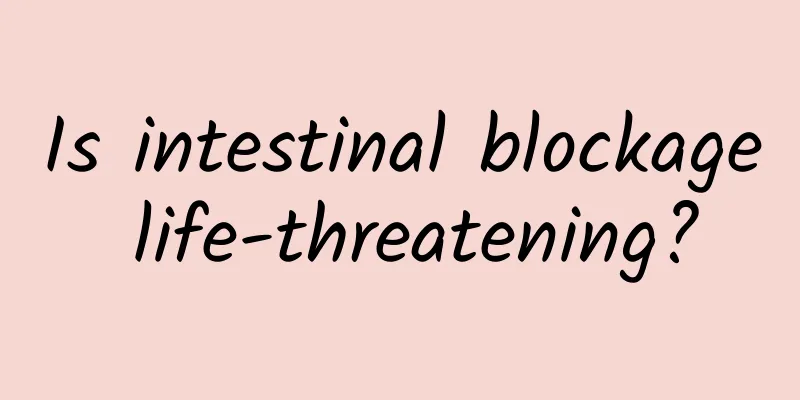What are the symptoms of cholecystitis? Early warning of cholecystitis

|
The function of the gallbladder is to store and concentrate bile. When you suffer from cholecystitis, it will cause pain. Severe cholecystitis can affect physiological functions. Cholecystitis is mainly divided into acute and chronic. Detailed symptoms are introduced below. 1. Acute cholecystitis The clinical manifestations of acute calculous cholecystitis are basically the same as those of acute acalculous cholecystitis. (1) Symptoms ① Pain, severe pain or colic in the right upper abdomen, mostly acute cholecystitis caused by stones or parasites blocking the neck of the gallbladder; the pain often occurs suddenly, is very severe, or presents a colic-like pain, mostly occurs after eating high-fat foods, and mostly occurs at night; general pain in the right upper abdomen, seen in acute cholecystitis without obstruction of the cystic duct, the pain in the right upper abdomen is generally not severe, mostly persistent bloating, with the progression of gallbladder inflammation, the pain may also worsen, the pain is radiating, the most common radiating sites are the right shoulder and the lower angle of the right scapula, etc., which is caused by gallbladder inflammation stimulating the right phrenic nerve endings and the peripheral nerves of the abdominal wall. ② Nausea and vomiting are the most common symptoms. If nausea and vomiting are persistent or frequent, it may cause dehydration, collapse and electrolyte imbalance, which is more common when stones or ascaris block the gallbladder duct. ③ Chills, chills, and fever. Mild cases often have chills and low fever; severe cases may have chills and high fever, the temperature may reach above 39°C, and mental symptoms such as delirium and delirium may occur. ④ Jaundice is less common. If jaundice occurs, it is generally mild, indicating that the infection has spread to the liver through the lymphatic vessels, causing liver damage, or the inflammation has invaded the common bile duct. (2) Main signs Abdominal examination revealed tense abdominal muscles, tenderness, rebound tenderness, and positive Murphy's sign in the right upper abdomen and mid-upper abdomen. In patients with cholecystectomy or pericholecystic abscess, a tender mass or a significantly enlarged gallbladder may be felt in the right upper abdomen. When abdominal tenderness and abdominal muscle tension extend to other areas of the abdomen or the entire abdomen, it indicates gallbladder perforation. Or there is acute peritonitis. 15% to 20% of patients suffer from liver damage due to edema around the cystic duct, gallstone compression and pericholecystitis, or inflammation involving the common bile duct, causing spasm and edema of the sphincter of Oddi, leading to bile excretion obstruction and mild jaundice. If the jaundice becomes significantly worse, it may indicate common bile duct obstruction with stones or concurrent common bile duct inflammation. In severe cases, signs of peripheral circulatory failure may occur. Blood pressure is often low and even infectious shock may occur, which is particularly common in severe cases of purulent gangrene. 2. Chronic cholecystitis (1) Symptoms Persistent dull pain or discomfort in the right upper abdomen; symptoms of indigestion such as nausea, belching, acid reflux, abdominal distension and heartburn; pain in the right lower scapular area; symptoms worsen after eating high-fat or greasy food; long course of disease, with alternating acute attacks and remissions. Acute attacks are the same as symptoms of acute cholecystitis, and remission may sometimes be without any symptoms. (2) Physical signs There may be mild tenderness and percussion pain in the gallbladder area, but no rebound tenderness; in cases of cholestasis, an enlarged gallbladder may be palpated; in acute attacks, there may be muscle tension in the right upper abdomen, normal body temperature or low fever, and occasionally jaundice. The tenderness point of the gallbladder is at the intersection of the outer edge of the right rectus abdominis and the costal arch, the tenderness point of the thoracic spine is beside the 8th to 10th thoracic vertebrae, and the tenderness point of the right phrenic nerve is between the two lower corners of the sternocleidomastoid muscle on the right side of the neck. |
<<: What are the symptoms of gastric bleeding? 5 phenomena that cannot be ignored
>>: What are the symptoms of esophagitis? Three warnings to tell you
Recommend
Chest acne
Generally speaking, acne occurs on the face. Actu...
Can dry eyes be cured by traditional Chinese medicine?
After the onset of dry eye syndrome, patients nee...
What to do if there is pus after burn scar
Common burns in life are divided into low-tempera...
When is the time for organ detoxification?
Internal organs are the most important organs in ...
What are the medicinal properties of Gorgon fruit?
Gorgon fruit is a relatively common Chinese medic...
What are the effects of Banfenghe medicinal wine?
What is the effect of Banfenghe Medicinal Wine? T...
Keloid Treatment
Keloids are mainly manifestations of skin damage ...
What are the methods for correcting flat heads in babies?
The baby's sleeping posture will actually aff...
What is the cause of the red spot under the glans skin that does not itch or hurt?
Red spots appear under the skin of the glans that...
What is the reason for the slow growth of the fetus?
During the pregnancy check-up, if you find that t...
Does falling asleep help reduce fever?
When children have a cold or fever, many parents ...
What causes white spots on thigh skin?
White spots are white spots, which may be partial...
Herpetic angina
Due to environmental pollution, the incidence of ...
How many cups of brown sugar water should I drink a day?
As we all know, when people feel unwell, many of ...
Feeling dizzy when sleeping?
After a tiring day, people hope to lie in bed and...









